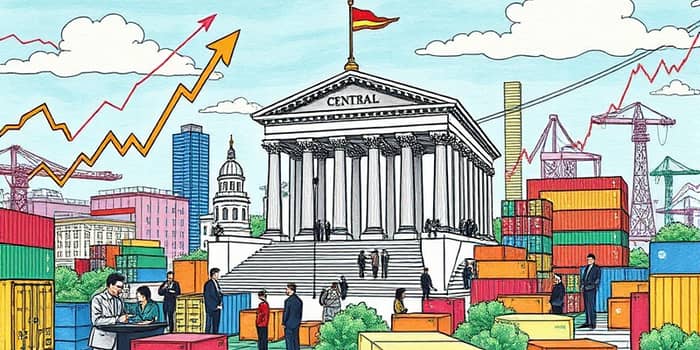
The Federal Reserve’s decision to maintain the federal funds rate at 4.25%–4.50% for a fourth straight meeting has sent ripples across global financial markets. Investors, businesses, and policymakers alike are dissecting every word of the Fed’s statements, looking for clues on the trajectory of monetary policy. Understanding how interest rate hikes influence economic conditions and market behavior is crucial for anyone seeking to navigate uncertain times with confidence.
The Federal Reserve’s decision to keep the federal funds rate unchanged at 4.25%–4.50% during its June 2025 meeting reflects a measured response to a complex economic backdrop. Despite persistent concerns over tariffs and geopolitical tensions, Fed officials have adopted a cautious approach amidst economic uncertainties. This stance underscores their commitment to the Fed’s dual mandate: promoting maximum employment while ensuring price stability.
Market participants have responded with a blend of relief and skepticism, factoring in both ongoing inflation trends and future rate cut expectations. Looking ahead, consensus forecasts anticipate potential rate reductions in late 2025, with cumulative cuts amounting to two percentage points by the end of 2027. However, these projections remain contingent on prevailing economic data, particularly inflation readings and labor market performance.
Inflation serves as a primary catalyst for central bank policy adjustments. When price levels accelerate beyond target thresholds, policymakers often raise interest rates to temper demand and rein in rising costs. This dynamic plays out through numerous channels, affecting everything from consumer borrowing to corporate investment decisions.
Recent measures of consumer inflation, such as the Consumer Price Index (CPI) and the Personal Consumption Expenditures (PCE) index, have shown signs of moderation. Nevertheless, tariffs imposed on imported goods have the potential to push prices higher, particularly for raw materials and consumer electronics. Economists warn that any sustained uptick in inflation could prompt additional policy tightening by the Fed, despite its current pause in rate hikes.
Interest rate hikes are designed to cool overheating economies, but they also carry the risk of dampening growth. Higher borrowing costs can lead to reduced consumer spending and slower business expansion. Yet many analysts see the current environment as one of cautious optimism for the economy, given robust wage growth and resilient corporate earnings.
For investment strategies, the key lies in adaptability: recognizing that rate hikes may slow growth but also create opportunities in sectors less sensitive to interest rate movements.
The global economy faces a delicate balance between slowing inflation and tepid growth. Tariff measures enacted by major economies have introduced additional complexities, influencing supply chains and trade dynamics. While some importers stockpiled goods ahead of tariff hikes, the long-term effects on consumer prices remain uncertain.
International Monetary Fund projections anticipate global GDP growth of 3.2% in 2025, with vulnerable economies at risk of heightened volatility. Central banks around the world are monitoring U.S. policy closely, recognizing that Fed actions often set the benchmark for monetary trends internationally.
The Fed’s dual mandate requires a careful balancing act: fighting inflation without jeopardizing employment levels. Currently, the U.S. unemployment rate sits at a historic low of 4.2%, providing room for policymakers to act against price pressures. However, any aggressive tightening risks tipping the labor market into contraction.
This forecast underscores the Fed’s likely path: maintaining elevated rates through the near term, then gradually easing as inflation moderates and labor market conditions warrant support.
Looking forward, market consensus suggests an initial rate cut window opening in Q4 2025. Such moves would aim to preemptively shore up growth as global headwinds and tariff-induced price pressures evolve. Long-term Treasury yields and mortgage rates are expected to decline modestly, potentially stimulating borrowing and investment.
However, uncertainty looms. Geopolitical tensions, shifting fiscal policies, and unpredictable supply chain disruptions could alter the Fed’s timeline. Investors and businesses must remain vigilant, closely tracking economic indicators and central bank communications.
Interest rate hikes represent a powerful tool for central banks, influencing everything from inflation expectations to asset valuations. By understanding the interplay between monetary policy and market dynamics, individuals and organizations can make more informed decisions.
Whether you are an investor seeking to rebalance a portfolio or a business planning capital expenditures, staying attuned to Fed signals and economic data is essential. In a landscape marked by both risks and opportunities, knowledge remains the most valuable asset.
References













